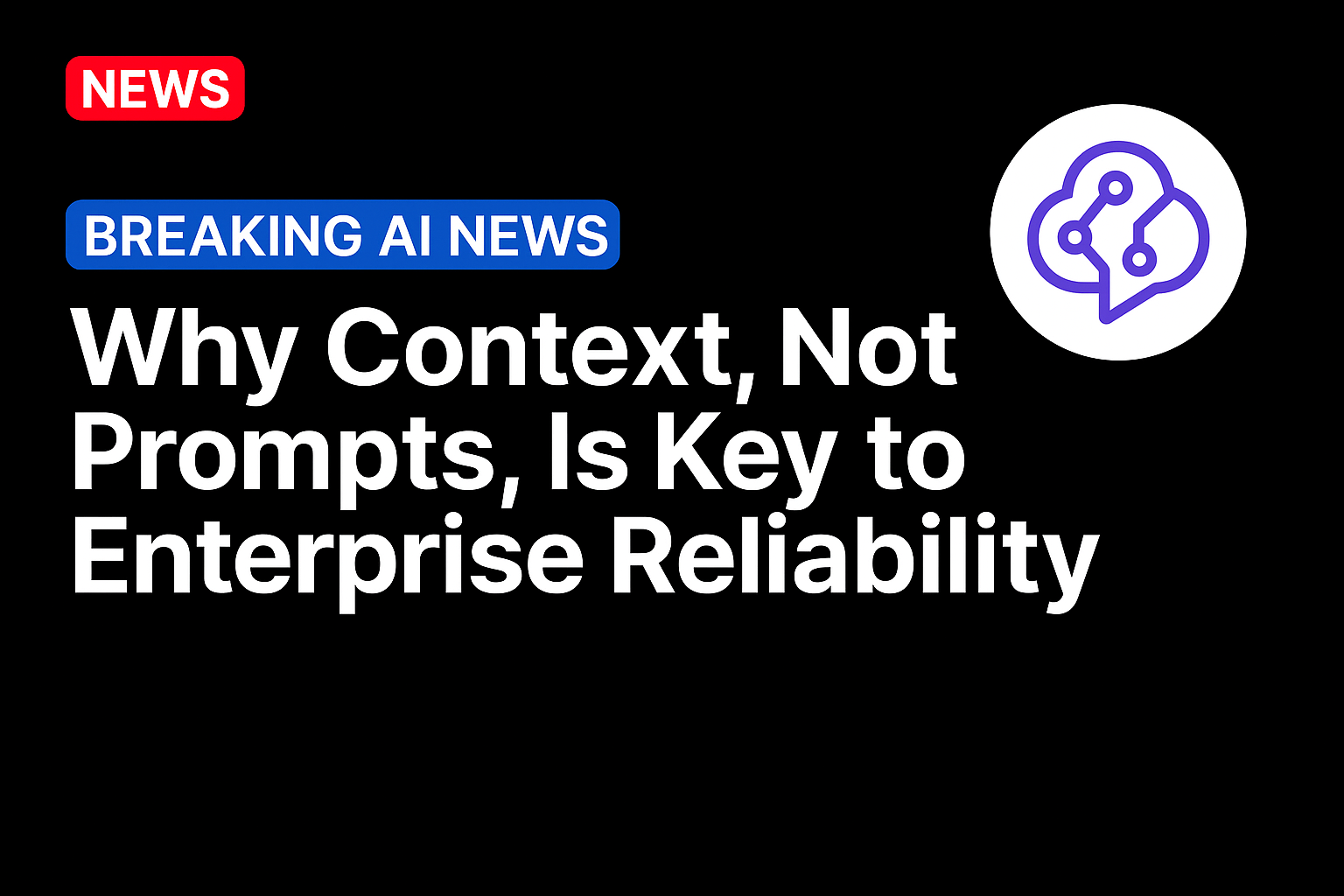
AI systems only perform as well as the information they are given. When inputs are scattered, incomplete or outdated, even advanced models can produce inconsistent or irrelevant results. Context engineering addresses that gap by structuring how information is organized, prioritized and refreshed so that models can interpret complex, interconnected data in real time.
Prompt engineering used to be a hot topic in AI. Developers believed that better wording could unlock better answers, flooding forums with prompt tricks and tips. It worked for simple tasks, but not for complex workflows.
For example, a customer service chatbot must pull from multiple data sources at once: previous support tickets, current account information, product documentation, and recent policy changes. For the bot to respond accurately, these inputs must be delivered in a consistent and meaningful order. If the model receives too much data or conflicting information, it may misinterpret the question or offer an outdated answer. This is where traditional prompting reaches its limits and structured context management becomes essential.
IBM explains that an AI model’s context window, the portion of information it can process at one time, functions like its short-term working memory. The order and quality of that information determine how effectively a model understands a request. Context enforces that discipline, ensuring that models work from the most relevant and current details instead of being overwhelmed by raw, unfiltered data. As IBM noted, clarity and sequencing are the difference between an AI system that performs reliably and one that produces guesswork.
From Retrieval to Real-Time Awareness
Many of today’s context-management methods evolved from retrieval augmented generation (RAG), a technique that allows models to reference new information without retraining. Before RAG, developers had to fine-tune models on proprietary data whenever new documents or rules were introduced. With RAG, the model instead retrieves the most relevant pieces of information from external sources such as databases or document repositories and inserts them into its context window before responding.
This shift made large language models far more practical for enterprise use. A financial institution, for example, can connect an AI system to its latest compliance bulletins or internal policy memos. When employees ask regulatory questions, the AI searches those documents, pulls relevant excerpts, and crafts an answer using the latest data. The model is not learning new information but applying its reasoning ability to the most current context.
Modern frameworks such as LangChain and Anthropic’s contextual retrieval research refine this further. They break large files into smaller sections, rank them by relevance, and feed only the most useful fragments into the model. That makes it possible to handle dense, cross-referenced material such as product catalogs, transaction records or compliance reports without exceeding processing limits or introducing noise.
Google Research has also shown how retrieval-based systems benefit from better context design. In its report on the role of sufficient context in RAG, Google found that accuracy improves when models are given only concise, structured inputs rather than long or loosely related data chunks.
For banks and financial institutions, this capability means a model can respond to customer questions about fees or credit terms based on the most recent version of documentation rather than outdated text. In fraud detection, it allows agents to reference only recent transactions or active watch lists, reducing false alerts and increasing speed.
Dynamic Context for AI Agents
The next phase of development involves AI agents that manage their own context dynamically. Instead of passively receiving information, these agents can decide which data or external tools to access during a task. A treasury assistant, for example, can analyze liquidity data, recognize that it needs updated currency rates, call a financial API, and continue processing without human input.
This approach has become more viable as token-processing costs fall. Enterprises can now deploy multiple specialized agents that share relevant summaries with each other rather than relying on a single large model. One agent might focus on compliance checks, another on risk scoring, and another on customer communication. Each maintains a narrow but accurate context and passes structured updates between systems. This coordination allows teams to manage complexity without overwhelming any single model.
As Anthropic noted, context is the control surface for AI behavior. Managing that surface effectively turns general-purpose models into reliable, specialized tools. Poorly managed context leads to drift, inconsistency and error. In high-stakes environments such as finance and compliance, that distinction determines whether AI systems deliver measurable efficiency or introduce new forms of risk.
Source: https://www.pymnts.com/




